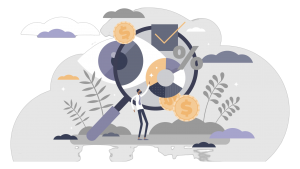How Business Owners Can Leverage Big Data
The key to Big Data is experimentation and testing - that and having the confidence to have a go.

Big Data refers to the capture and analysis of large bodies of data generated by powerful new technologies. Its analyses provide us with key business insights so that we can better determine patterns, predict future outcomes and make more responsible decisions for our businesses.
In many organizations, the use of Big Data started in the HR sphere because companies needed to better understand employee recruitment, performance and mobility. Now, though, business owners are clamoring for Big Data implementations in every part of business operations and are seeking new ways to embed analytics into everything we do.
Within the next 10 years, the following examples will be mainstream uses of Big Data in the business world:
- Reducing unconscious bias during the hiring process by calling out problematic job posting language.
- Predicting the likelihood of employee success by capturing certain traits on video.
- Delegating assignments based on individual productivity data gleaned from wearables.
- Optimizing employee schedules based on existing patterns of task allocation.
- Refining training approaches based on individual learning preferences.
- Predicting vulnerability to fraud among certain customer populations.
- Understanding customer buying habits in response to previously unpredictable external conditions (such as natural disasters).
- Using past customer behavior to flag and address growing service problems.
- Identifying a pending reputation crisis through patterns of negative online chatter.
- Calibrating organization-wide operations for the most effective use of automation.
Maybe you’ve thought Big Data analytics was reserved for larger companies with big budgets, but this is no longer the case. Every business owner can develop a data strategy to better understand customer preferences and how to increase your existing and future business.
By examining your data in real-time, you can instantly change course if necessary to gain a market edge. And you can do so by employing tools like Google Analytics, Salesforce, or even Hadoop, an open-source project offering a platform to store and manage Big Data.
Hadoop has robust storage for multi-structured data like Web server logs, email and social network data, and its framework for processing data, MapReduce, allows users to play with data and move it around quickly. To begin taking advantage of Big Data’s potential, consider the following steps:
Assign an analytics leader
Depending on the size of your company, you might put data analytics in the hands of a dedicated, multidisciplinary group that includes organizational leaders and representatives from all functional departments.
But if you are smaller, it may make more sense to hire a data manager or speak with a consultant for assistance with your initial Big Data strategy and implementation.
Design a unique approach
Encourage the integration and use of structured and unstructured data from internal and external sources. To provide value, you must be able to translate information into insights and solutions.
Although you must have the right technology in place to do this, don’t underestimate the importance of human team members. Without their judgment and intuition, all the data in the world have no value.
If you don’t have a lot of experience with Big Data analytics yet, consider starting small, perhaps with one data stream at a time. For example, you might initially look at the main products being purchased in a particular geographic area.
You can then use this information to develop targeted marketing offers to specific segments of your customer population.
Maintain data quality and security
Even the smallest organizations must consider data quality at all levels, put in place privacy and anonymity policies, and carefully implement practices to protect employee data from theft and abuse.
Many larger companies now have governance teams to ensure all people-related data are coordinated as the company reorganizes, acquires others and implements new systems. Regardless of your size, be sure to stay legal.
For instance, share a data privacy policy with your customers similar to the FTC's Fair Information Practice Principles, and unless you have an extremely compelling reason for doing so, don't sell your customers' data to third parties.
Above all else, don’t look at Big Data as an intimidating chore. Realize its promise for your business, and have fun experimenting with its applications.
Alexandra Levit is the author of the new book Humanity Works: Merging Technologies and People for the Workforce of the Future (Kogan Page, October 2018). A partner at People Results, she helps companies prepare for the future of work through proprietary research, consulting, and program development.
Thanks for signing up to Minutehack alerts.
Brilliant editorials heading your way soon.
Okay, Thanks!


